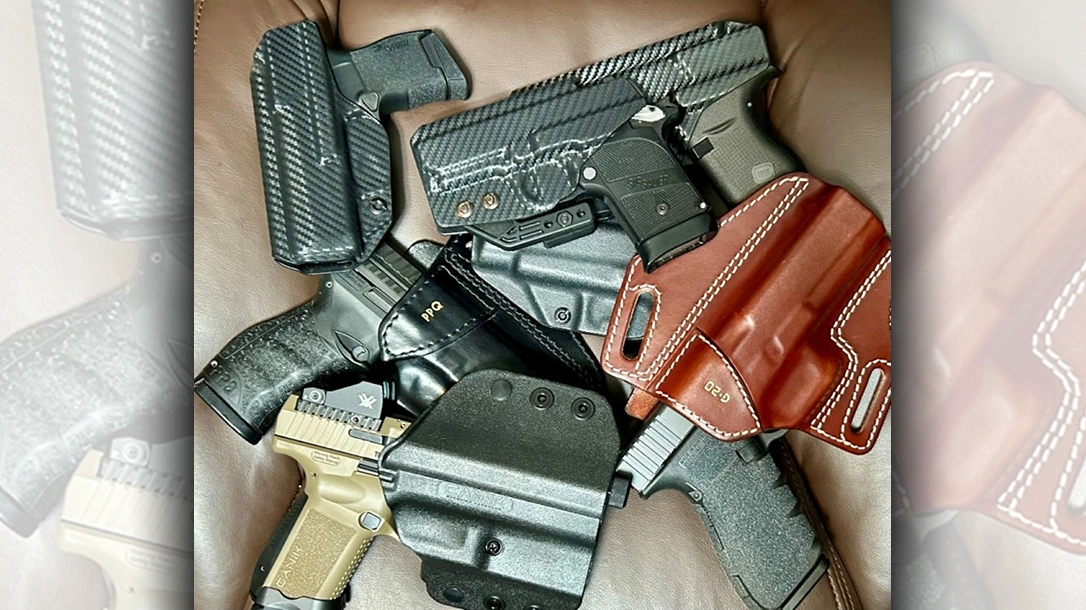Over the years, I have been fortunate enough to own many different firearms. These purchases have been driven by many factors, including collecting, history, competition, hunting, and supporting innovation. I am especially a sucker for the next ‘new’ thing, especially when it comes to defensive handguns. However, with new, uncommon guns, finding holsters can be a little difficult. But they are out there, and here are some makers who can help.
Finding Holsters for Uncommon Guns
Over the years, I have bought, tested, and, more often than not, rejected various handguns bought as potential carry guns. However, I have also found a decent number of guns that have passed my tests and entered into my carry rotation.
Often, these guns are not the traditional guns well supported by holster manufacturers. They have come from either smaller companies or are brand new designs from established larger companies.
Advertisement — Continue Reading Below
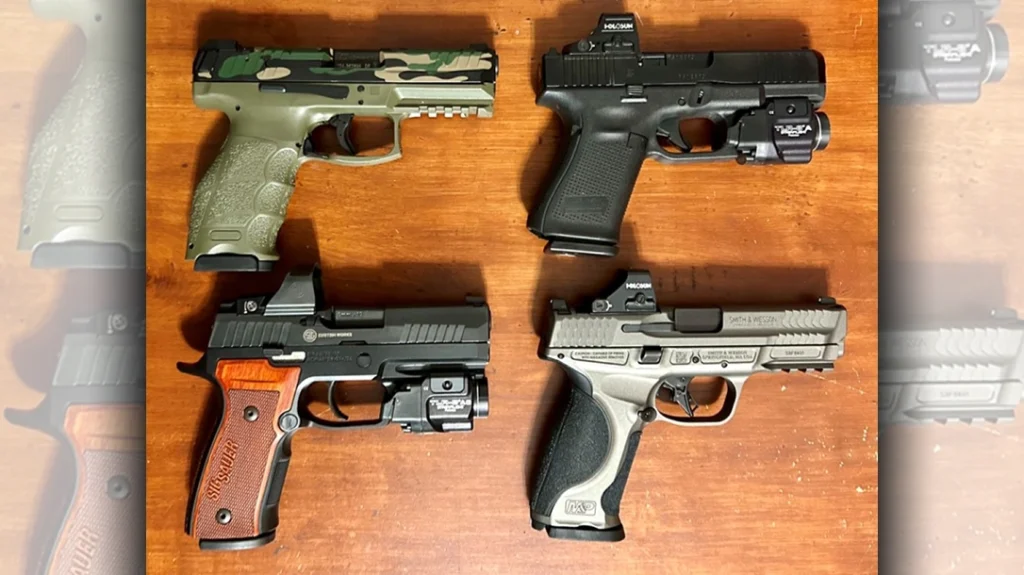
In 2023, the top five handguns sold for carry use included the Sig Sauer P365 and P320, the Glock 19 and 43, and the Beretta Model 90. Finding fitted holsters for these guns, as well as other designs like the 1911, is very easy. Many options are available from almost every firearms holster maker.
But where do you look when your gun is a new design or from a smaller company?
Advertisement — Continue Reading Below
An Aside on Carrying Different Guns
My general advice for anyone new to carrying with only a reasonable amount of time for regular training is to carry the same gun in the same way every day. In the unlikely event you need to access your gun, you will greatly benefit from having the same system and carry method that matches any training and practice you have had.
Having said this, I do not always follow my own advice. I tend to carry in the same positions with my primary gun at the 4 o’clock position on my waist. Likewise, I carry a backup gun in a calf holster on my left leg.
Otherwise, I tend to adjust based on season and gun. This includes varying inside the waistband (IWB) and outside the waistband (OWB) and kydex (plastic), leather, or a combination of the two. I also tend to change the guns that I am carrying depending on my current fancy or newest purchase. I justify these changes by actively training with any change for a period of time before incorporating the change.
Advertisement — Continue Reading Below
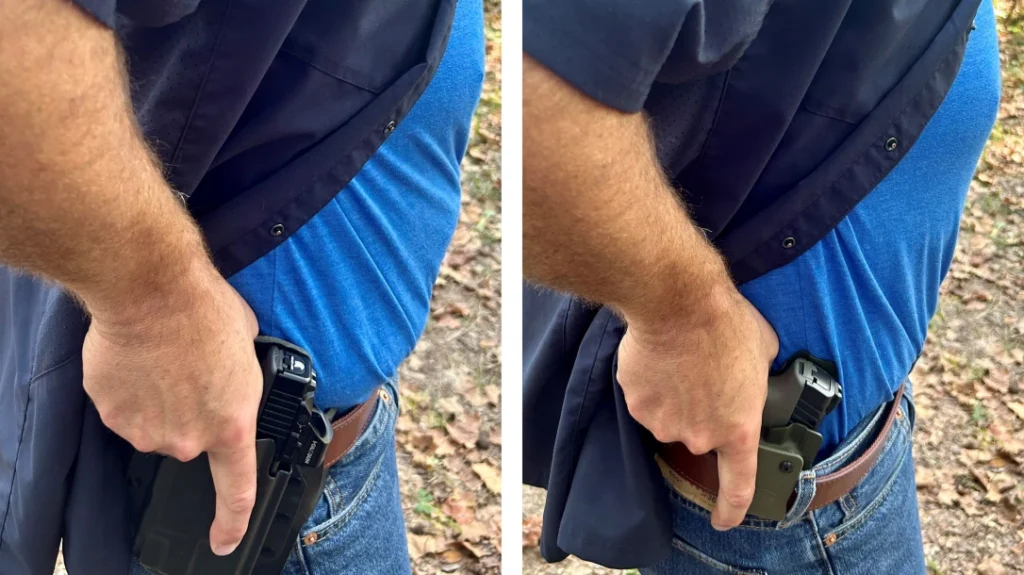
A Second Aside on Testing Carry Guns
Anyone familiar with my writings knows I am a big fan of creating lists of criteria for any major decisions. A carry gun and holster is certainly one of these decisions, in my opinion. It could be the difference between my or my family’s life or death.
I tend to use very similar simple holsters (Kydex IWB and leather/Kydex OWB) on guns that work well for me. There are certain criteria when selecting a carry gun that include some objective (measurable across people). These factors encompass size and capacity and more personally subjective factors such as concealability and comfort.
Advertisement — Continue Reading Below
The other objective and subjective factors are ones I systematically test. I start with reliability (relatively objective), shooting experience (subjective), and mechanics (somewhat subjective).
Running Rounds
For reliability, I want to shoot between 100 to 500 rounds of practice ammo with no gun-related malfunctions or issues. A fair number of guns have failed this test, resulting in me stopping the process. Assuming no issues, I will then shoot 2-3 magazines of the intended defensive ammunition, again looking for no gun-related issues.
This process will also give me a solid idea of the shooting experience. Is the gun enjoyable to shoot, and how does it handle recoil? These measures are personal and dependent on your physiology, training, and grip.
Advertisement — Continue Reading Below
There are guns few people like that I love to shoot. Likewise, there are a couple of well-loved carry guns that I just don’t like.
Finally, I am also evaluating mechanics through this process. Do I like the trigger (specifically when taking multiple shots)? Is the mag release reliable and results in a clean drop of the spent magazine every time it is depressed? If there is a safety, does it work reliably, and do I find it each time I need to engage or disengage it? Does the slide reliably lock back when empty?
Assuming a gun passes these tests, the final test is presentation.
Advertisement — Continue Reading Below
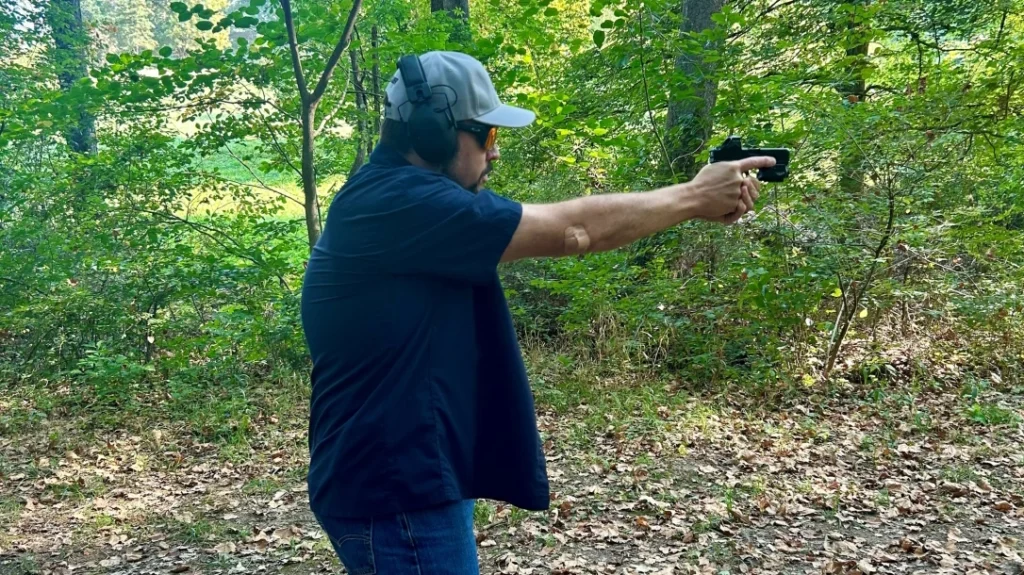
Drawing from the Holster
Assuming a gun is accurate, reliable, and a good fit mechanically and physiologically for me, the final step is working dry and then live on drawing from the holster and presenting to target. The goal is to be able to reliably present the gun (sights on target) consistently with no issues. This may happen very quickly.
When I shifted from the Glock 48 to the Sig Sauer P365 Fuse, I was drawing reliably within minutes. However, when I first shifted from an IWI Jerico that I carried for years to a Glock 17, this process took a few days.
Advertisement — Continue Reading Below
At the end of this process, I will shift to the new gun as my everyday carry (EDC), assuming it has passed all the tests.
Less Supported Guns
My love for new or innovative guns has resulted in many changes to my primary carry. Though I will often test guns to replace my backup in the calf holster, few have successfully unseated the current carry (right now, a Kimber Micro9).
My primary has had long-time champions that may reenter the mix, such as the IWI Jericho, Colt 1911, and Glock 17. However, many others have also taken the ‘top’ spot over the years. Guns such as the Hudson H9, IWI Masada, Walther PPQ in .45 ACP, EAA Tanfoglio Witness, Sig P365 Fuse, and Rost Martin RM1C have all passed the tests described above to become my primary carry for a time.
Advertisement — Continue Reading Below
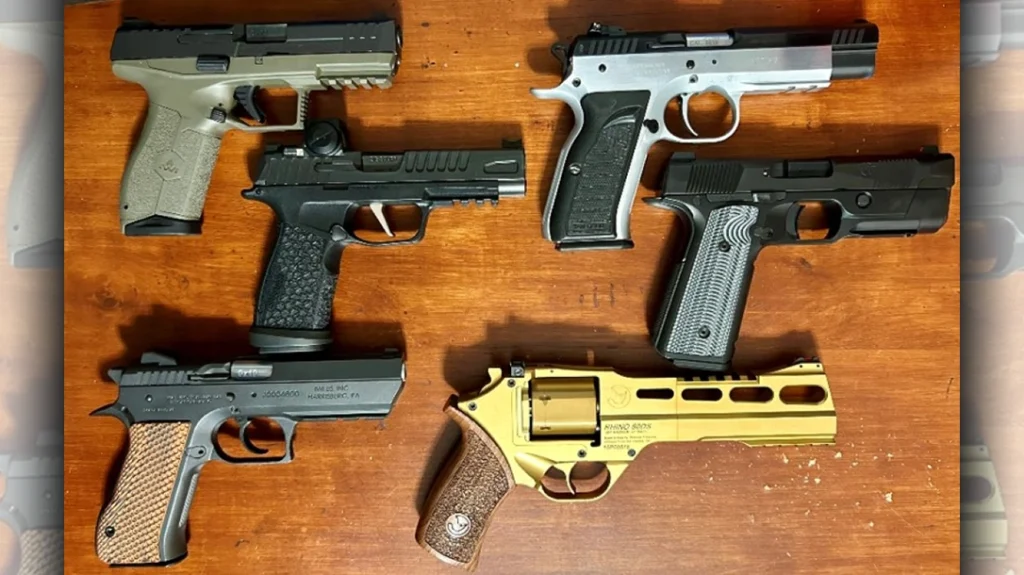
Holsters
I am not a fan of one-size-fits-all holsters, regardless of the system. If I plan on carrying a gun, I want a custom-designed holster for that gun. Additionally, there are many local Veteran-owned smaller holster companies that I support when I can.
With that said, many of my gun choices are not supported by smaller companies. The first place to look is on the gun company’s website. Many times, they will have holsters available for their products.
The next step is a Google search that often helps find harder-to-find holsters. Over the years, I have found those searches often lead me to the same sites. Remember, I am looking for simple Kydex IWB or leather (or leather and Kydex) OWB holsters.
Some good options for less common firearms are WeThePeopleHolsters.com, CrossbreedHolsters.com, and DaraHolsters.com.
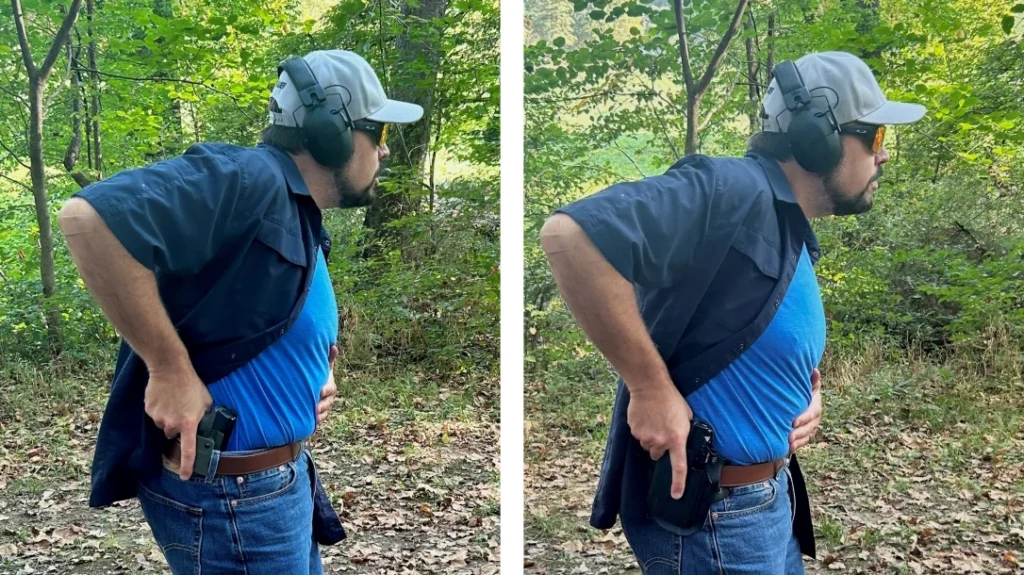
Summary
Carry what works for you and how you prefer to carry. I honestly believe any gun carried in any way is better than not having a gun if needed. That said, different carry methods and different guns will be more optimal in some situations than others.
However, don’t let the immediate lack of a readily available holster stop you from choosing the right gun for you before exploring all your holster options. With a little searching, you are very likely to find the right holster.
